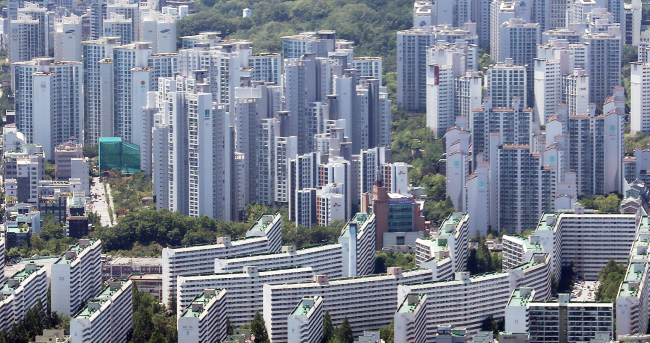 |
(Yonhap) |
A middle-income household can buy a house in the Seoul area by saving the entire income without spending a dime for nearly 12 years, data showed Tuesday.
The house price to income ratio, or PIR, reach
ed 11.7 in the capital city during the first quarter of this year, marking the highest since records began in 2008, according to KB Kookmin Bank Liiv On, a real estate data tracker.
PIR is a widely used measurement of house affordability in a given city or country. The ratio is calculated by dividing an area’s median house price by its median household’s disposable income, which is then expressed in years.
While Seoul’s median house price surpassed 700 million ($566,022) won for the first since 2008, the city’s median income came to nearly 60 million won, up some 4.7 million won from the previous quarter.
Experts say the median income rose slower than median house price in Seoul because high-income families have recently flocked to borrowing home-backed loans, which further drove up median house price.
“As home buyers increasingly applied for home-backed loans at the last minute before the government buckled down tighter regulations on property purchase, home prices climbed up in the first quarter,” an official said.
Home-backed loans here during the first quarter jumped to 858.2 trillion won, gaining 15 trillion won from the previous quarter, which is the largest quarterly rise since the third quarter of 2017, according to the Bank of Korea.
Meanwhile, median income grew slightly faster than house prices in Gyeonggi Province and Incheon compared to Seoul, with house price to income ratio being measured between 6 and 7 in the same period. Gyeonggi Province’s median income as well as house price stood at 41.9 million won and 286.3 million won while Incheon recorded 36.94 million won and 257.5 million won, respectively, data showed.
By Choi Jae-hee (
cjh@heraldcorp.com)







![[Today’s K-pop] Blackpink’s Jennie, Lisa invited to Coachella as solo acts](http://res.heraldm.com/phpwas/restmb_idxmake.php?idx=644&simg=/content/image/2024/11/21/20241121050099_0.jpg)
